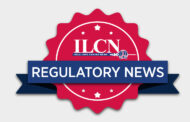Researchers and clinicians in the world of lung cancer may not be aware of the slow and steady development of “homegrown” immunotherapy drugs in China, but they should be. Many of these agents are moving through clinical trial development with success and gaining more attention from large pharmaceutical companies.
For example, in February, Novartis announced a collaboration and license agreement with BeiGene to develop, manufacture, and commercialize the company’s anti-PD-1 antibody tislelizumab.1
The China National Medical Products Administration recently approved tislelizumab in combination with chemotherapy in first-line advanced squamous non-small cell lung cancer (NSCLC); it is already approved for two other indications.
The approval was based on results of the RATIONALE 303 trial, presented at the 2020 ASCO Annual Meeting, which showed significant improvements in progression-free survival (7.6 vs. 5.5 months) and objective response rates compared with chemotherapy alone.2
In March, AstraZeneca announced it had signed up to help market Junshi’s PD-1 inhibitor toripalimab (Tuoyi) for urothelial carcinoma plus all indications in certain “non-core areas”.3
The drug already has approval in China for recurrent or metastatic nasopharyngeal carcinoma.
These are just two of many compounds under development or already approved in China, according to Caicun Zhou, MD, director of Cancer Institute of Tongji University Medical School, China and Deputy Editor of the ILCN.
Innovent and Lilly’s sintilimab (Tyvyt) was also approved in combination with pemetrexed and platinum chemotherapy in first-line nonsquamous NSCLC in February, and camrelizumab plus carboplatin and pemetrexed was approved as first-line therapy for advanced nonsquamous NSCLC.
With the availability and approval of a number of global anti-PD-1 compounds, it may beg the question: why develop more? However, Dr. Zhou said the answer is straightforward.
“Global compounds like pembrolizumab, nivolumab, atezolizumab, or durvalumab are quite expensive,” Dr. Zhou said. “Ordinary Chinese people cannot afford these therapies, especially not for the duration of treatment required by many of these immunotherapies drugs.”
Market Competition
According to Dr. Zhou, China has enough affluent people who will likely prefer the global compound solarge pharmaceutical companies should not be too worried about loss of market share. However, these big players will not able to increase market share in China without inclusion on its National Reimbursement Drug List, which often requires massive price cuts.
In addition to loss of market share in China, it is possible that market share in the United States may also be at risk. Although head of the U.S. Food & Drug Administration Richard Pazdur, MD, said in 2016 that too many drug manufacturers were pursuing the same approach – inhibition of PD-1/PD-L1 — he urged Chinese companies at a Q&A at the 2019 American Association for Cancer Research Annual Meeting, to bring PD-1/PD-L1 inhibitors to the U.S market if they could be available at more affordable prices.
How much more affordable? Sintilimab was the first PD-1 inhibitor to make it onto China’s national reimbursement drug list where it was listed with a price reduction of 64%. Manufacturers of tislelizumab, camrelizumab, and toripalimab have agreed to slash prices by about 80%; although these price agreements in China do not necessarily reflect the price tags that will be established elsewhere in the world.
A comparison of wholesale acquisition cost for the drugs showed significant discounts in China compared with U.S. cost. For example, nivolumab costs more than $16,000 every 4 weeks in the United States compared with about $7,000 every 4 weeks in China. For pembrolizumab, the comparison would be about $13,000 every 4 weeks compared with $8,000 every 4 weeks in China.4
These price agreements in China, however, do not reflect what price tags elsewhere will be.
Do They Compete?
Of course, the U.S. FDA would only approve these Chinese domestic drugs if they proved safe and effective. Data on their use in lung cancer continues to be presented at major medical meetings.
For example, at the recent European Lung Cancer Virtual Congress (ELCC) a study of camrelizumab was presented that tested the drug in combination with carboplatin and paclitaxel 1:1 against placebo plus chemotherapy in patients with stage IIIB-IV squamous NSCLC.5
Results showed significant improvement in progression-free survival (8.4 vs. 4.9 months; HR=0.37; 95% CI, 0.29-0.47; P<.0001) and overall survival (not reached vs. 14.5 months; HR=0.55; 95% CI, 0.40-0.75; P<.0001) for the addition of camrelizumab. Overall response rate and duration of response both consistently favored camrelizumab plus chemotherapy.
To put that in context, long-term follow-up data from KEYNOTE-407, a similar study of pembrolizumab in advanced squamous NSCLC, was also presented at the meeting. In this study, 278 patients with squamous NSCLC were randomly assigned to pembrolizumab plus carboplatin and paclitaxel/nab-paclitaxel or placebo plus chemotherapy.6
At the protocol-specified final analysis, the HR for overall survival was 0.71. Looking at patients who completed 35 cycles of treatment – about 2 years – the HR for overall survival remained 0.71. Median overall survival from the pembrolizumab arm was 17.2 months compared with 11.6 months for the placebo plus chemotherapy arm, demonstrating continued benefit.
In non-squamous NSCLC, an updated analysis of KEYNOTE-189 testing first-line pembrolizumab plus pemetrexed-platinum compared with placebo showed substantially improved overall survival (22.0 vs. 10.7 months; HR=0.56; 95% CI, 0.45-0.70) and progression-free survival (9.0 vs. 4.9 months; HR=0.48; 95% CI, 0.40-0.58) compared with placebo.7
Results of the ORIENT-11 trial presented at IASLC WCLC 2020 showed that sintilimab plus platinum-based chemotherapy also resulted in significantly improved progression-free survival (8.9 vs. 5.0 months; HR=0.482; 95% CI, 0.362-0.643; P<.00001).8
Overall survival data were not yet mature but the sintilimab regimen showed a positive trend with respect to survival rates (6-month overall survival: 89.6% vs. 80.4%; HR=0.609; 95% CI, 0.400-0.926; P=.01921).
Wider Perspective
We need to be including more patients that represent the diversity of our population
According to Christian Rolfo, MD, PhD, MBA, director of thoracic medical oncology program and early clinical trials at University of Maryland School of Medicine, it is always beneficial to have more options for patients with lung cancer, but what these new drug trials should really be doing is calling attention to the lack of population diversity in U.S. lung cancer clinical trials.
The FDA’s 2020 Drug Trials Snapshots Summary Report looked specifically at the therapeutic area of oncology.9
Of about 5,000 patients who participated in oncology trials leading to 18 drug approvals in 2020, only 5% were Black or African American, 6% were Hispanic, and 14% were Asian. However, less than half of the total participants were from sites in the United States.
Looking within U.S. trials, a review published in Journal of Clinical Oncology found that race distribution was quite different; Asian patients comprised about 6% of participants.10
Specifically, they wrote, diversity is important in trials of immunotherapy to make sure that race-based differences in immune status are not overlooked, as the authors have indicated. As an example, in an examination of the pharmacokinetics of nivolumab from patients enrolled in 11 different clinical trials, Asian ethnicity, and male gender had significant impact on nivolumab clearance. In the CheckMate 057 trial in non-squamous NSCLC, only 3% of enrolled participants were Asian.
“We need to be including more patients that represent the diversity of our population,” Dr. Rolfo said.
He pointed out that the data on the China Domestic immunotherapy drugs are only done in the local population and may not necessarily reflect what is happening in other areas of the world. However, in order to accurately compare, we have to start to see greater inclusion of a variety of ethnicities in the clinical trials conducted here.
- 1. BeiGene. BeiGene Announces Closing of Collaboration with Novartis to Develop and Commercialize Anti-PD-1 Antibody Tislelizumab in North American, Europe and Japan. February 26, 2021. https://www.businesswire.com/news/home/20210226005154/en/BeiGene-Announ….
- 2. BeiGene BeiGene Presents Phase 3 Data on Tislelizumab Combined with Chemotherapy for the Treatment of Patients with Advanced Squamous Non-Small Cell Lung Cancer at the 2020 American Society of Clinical Oncology (ASCO) Virtual Scientific Program. May 29, 2020. https://ir.beigene.com/news-releases/news-release-details/beigene-prese…
- 3. Liu A. AstraZeneca licenses Junshi’s PD-1 in China in a bizarre commercialization deal. March 2, 2021. https://www.fiercepharma.com/marketing/astrazeneca-licenses-junshi-s-pd….
- 4. Plieth J. China’s blueprint for a checkpoint blocker price war. March 21, 2019. https://www.evaluate.com/vantage/articles/analysis/spotlight/chinas-blu…. Accessed April 26, 2021.
- 5. Zhou C, et al. 96O – Carmelizumab or placebo plus carboplatin and paclitaxel as first-line treatment for advanced squamous NSCLC (CameL-sq): a randomized, double-blind, multicenter, phase III trial. Presented at European Lung Cancer Virtual Congress 2021.
- 6. Robinson A, et al. 970 – First-line pembrolizumab plus chemotherapy for patients with advanced squamous NSCLC: 3-year follow-up from KEYNOTE-407. Presented at European Lung Cancer Virtual Congress 2021
- 7. Gadgeel S, Rodriguez-Abreu D, Speranza G, et al. Updated analysis from KEYNOTE-189: pembrolizumab or placebo plus pemetrexed and platinum for previously untreated metastatic nonsquamous non-small cell lung cancer. J Clin Oncol. 2020;38:1505-1517.
- 8. Zhang L. ORIENT-11: sintilimab + pemetrexed + platinum as first-line therapy for locally advanced or metastaic non-squamous NSCLC. Abstract 1. Presented at WLCL 2020.
- 9. U.S. Food & Drug Administration. 2020 Drug Trials Snapshots Summary Report. https://www.fda.gov/media/145718/download. Accessed April 26, 2021.
- 10. Nazha B, Mishra M, Pentz R, et al. Enrollment of racial minorities in clinical trials: old problem assumes new urgency in the age of immunotherapy. J Clin Oncol. 2019;39:3-10.






